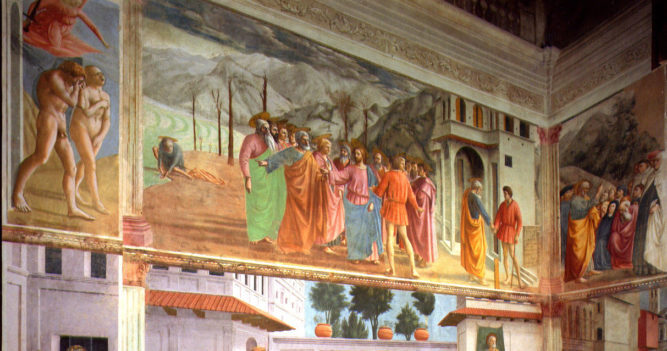Florence Civic Museums Free from March 6 – 8

Regarding Coronavirus, Florence mayor Dario Nardella wrote to the community (in English): “national and local governments have taken measures to prevent spread of the infection…and there are no risks to live and stay [sic] in Italy, and particularly in Florence and Tuscany.” In light of the Coronavirus situation, the city’s civic museums will grant free admission to everyone from March 6 – 8 as part of the municipality’s campaign dubbed cultura contra paura.
Landmarks that will be accessible with no-cost entrance (up to one hour before closing time) comprise Palazzo Vecchio, open from 9 am to 7 pm; the Arnolfo tower 10 am to 5 pm; The Novecento Museum of 20th and 21st Century Art 11 am to 7 pm; and Santa Maria Novella 9 am – 5:30 pm. The Masaccio, Masolino, and Filippino Lippi frescoes of the Brancacci Chapel can be admired from 10 am to 5 pm, while the Salvatore Romano Antiquities Foundation will welcome visitors 10 am to 5 pm; ditto for the Stefano Bardini Museum between 11 am to 5 pm.
Among the sites exempting a ticket fee this weekend in Florence is the Brancacci chapel. During the 1420s, Felice Brancacci wanted to decorate his family chapel in the church of Santa Maria del Carmine. The theme of the fresco cycle is the life of St. Peter, in addition to scenes from the story of Adam and Eve: the Temptation and the Expulsion from Paradise. Brancacci could not have know how important his decision would be to art history and humanism.
Brancacci decided to award the commission to two painters originally from small towns. Both were named Thomas, and in accordance with the tradition, their names reflect their genealogies: Maso di Cristofano Fini and Maso di Ser Giovanni di Monte. Their respective nicknames were Masolino and Masaccio.
Masolino was an International Gothic painter, a style that emphasized a mixture of idyllic depictions and details of finery. Masolino’s delicate figures and use of idealized fantasy is in contrast to the realism employed by his younger colleague, Masaccio, a forza della natura (force of nature), unleashed a new style of painting during the early Renaissance that squarely oriented man in space, through the use of chiaroscuro, light and shadow. Masaccio also introduced perspective to painting, which draws the eye to a central vanishing point in order to add a third dimension. As if all of this wasn’t revolutionary enough, this is also what Frederick Hartt wrote in his classic textbook History of Italian Renaissance Art: “Each stroke of Masaccio’s brush in fact is equivalent to a separate reflection of light on the retina.”
Another landmark that can be visited for free, the Bardini museum, is itself is a work of art. With its distinctive blue painted rooms, it was once the home of famous antique dealer Stefano Bardini, who left his home, gallery, and garden to the city of Florence after his death in 1922. The collection contains a lovely 14th century “Charity” by Tino da Camaino, and two works by Donatello, comprising an innovative painted and a golden Madonna and Child relief. A pair of Florentine Renaissance paintings stands out: Pollaiolo’s St. Michael slaying the dragon and Piero di Cosimo’s St. Jerome. (rosanna cirigliano)
